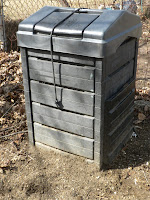You can start greening your vacation before even leaving the house. Small measures, such as adjusting the thermostat, turning down the water heater and furnace, unplugging appliances, and stopping your newspaper can go a long way. Pack your own shampoo and soap to save on those small plastic hotel bottles and, if possible, bring your own refillable water bottles and/or travel mugs to cut back on the number of disposable cups you use.
When it comes to transportation, trains and buses are more eco-friendly than flying. If flying is the only option, you may want to consider purchasing carbon offsets. Carbon offsets are additional fees you can choose to pay. The money is used to sponsor projects, such as wind farms or landfill gas capture, that produce clean energy. The price of the offset depends on the length of the flight. Expedia, for example, charges $5.99 for flights up to 2,200 miles, $16.99 for up to 6,500 miles, and $29.99 for a flight up to 13,000 miles.
Eco-friendly accommodations are a fast growing market. Environmentally Friendly Hotels lists almost 3,000 hotels throughout the world that meet strict environmental impact standards. Many of these green hotels compost waste, are equipped with solar or hydro renewable energy systems, and are outfitted with gray water recycling systems (which purify and reuse laundry, bath, and dishwasher water). They also take simple measures such as recycling, providing newspapers only upon request (to avoid wasted paper), and allowing guests to reuse linens and towels instead of laundering them each day. And these hotels don't necessarily have to cost more because they're green. Sustainable operating techniques save hotels money in the long run – savings that can be passed onto the customer.
Green Key certified hotels have met special criteria to qualify as a green lodging site. The Foundation for Environmental Education endorses these programs and ensures the resorts maintain sustainable practices. On average, Green Key sites use 20% less electricity, 25% less heating energy, and 27% less water than other vacation facilities. The American Hotel and Lodging Association also maintains a list of hotels and resorts that have been commended for their environmentally-conscious practices.
Once you reach your destination, continue with your eco-friendly habits from home. Keep showers short and turn off heat/AC and lights before heading out. Rent bikes or a scooter instead of a car. Use public transportation and walk when possible. If you do rent a car, consider a hybrid. If your hotel doesn't already have a policy in place, reuse your sheets and towels and ask if the hotel will recycle collected items for you. Seek out local artisans and businesses for sustainable souvenirs that benefit the local community.
By 2020, over 1.6 billion tourists will be flying to international destinations. Special consideration is needed when traveling to an area with an endangered ecosystem. Your green practices of conserving energy and water and keeping waste to a minimum become even more critical. Also, make sure not to buy any products made from endangered species, hard woods or ancient artifacts. Again, it's best to choose local products (such as jewelry or textiles produced by locals) rather than imported goods.
And finally, what's the greenest (and cheapest) vacation of all? A staycation! Play tourist in your own town (or neighboring towns) and visit local museums, zoos, historical sites, festivals, traditional tourist spots, and anywhere else that piques your interest. Check out your state's tourism website for ideas. You may be surprised by how much is available right outside your door.
So, whether you're traveling around the world or discovering the beauty of a staycation, remember: “Leave only footprints behind you; take only memories when you leave.”


